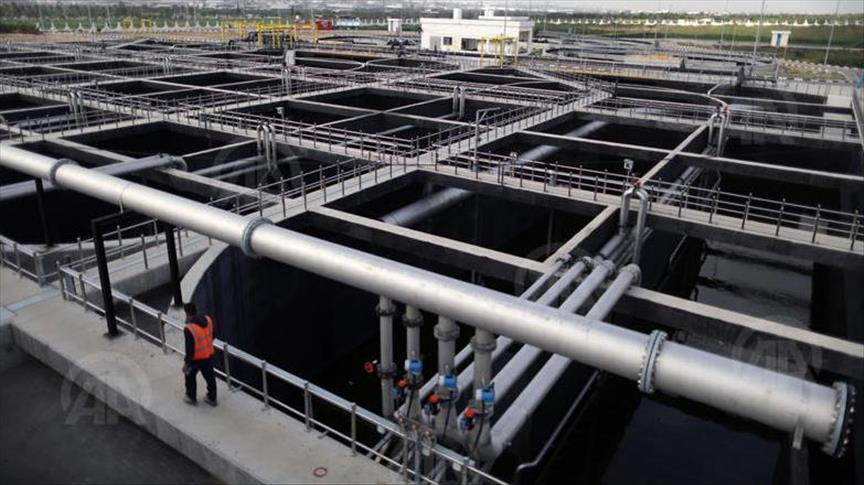- The Writer holds an MSc in Eurasian Political Economy & Energy from King’s College London and also an MA in European Studies from Sabancı University.
Almost 50 percent of Russia’s budget revenues were collected through hydrocarbon taxes in 2017, of which 38 percent directly came from oil and oil products. The strict correlation between oil revenue and economic indicators makes Russia’s economy more vulnerable to oil price volatility. The collapse of oil prices in mid-2014 resulted in an economic recession. However, since then Russia’s oil industry has shown great resilience and has raised the question as to whether this growth is sustainable in the future.
In conjunction with heavily imposed sanctions, Russia’s oil industry had also to endure global financial constraints that were heavily felt in every corner of the world due to the sharp fall in oil prices. Nonetheless, despite many hardships, Russia’s oil industry continued to progress steadily, showing great resilience towards oil price shocks.
Notwithstanding, the limited reach of global finances with the help of a flexible fiscal regime, and currency devaluation has ensured Russia’s oil industry has managed to come through one of the worst oil price falls.
With an average production of 10.96 million barrels/d (/d) and a 1.5 percent growth rate back in 2015, production growth continued in 2016, reaching a peak of 11.29 /d with an average growth rate of 2.2 percent. The pace of growth slowed down in 2017 after Russia’s participation in the OPEC-led global oil supply cut pact. Russia promised to cut as much as 300,000 barrels per day to achieve the targeted cut with other OPEC member states.
It was small to medium-scale oil companies, as opposed to the larger giants, that led the success in managing the balance between oil supply and demand during the collapse in oil prices. Gazprom Neft, Bashneft, Tatneft Novatek are among those that made significant contributions to greater oil production. These companies, excluding Novatek, achieved an average 10 percent growth from 2015 onward, while Novatek, on the other hand, showed the greatest performance with a 70 percent output increase. With the discovery of a new greenfield, called Yarudeyskoye, Novatek produced approximately 3.5 million barrels per annum. Significant tax breaks together with increasing technological advancement made it possible to utilize once unavailable and previously inaccessible reserves.
Another key driver for Russia’s oil production growth despite the oil price drop and heavy sanctions comes from the fact that large oil companies have focused on managing the declining rates of brownfields while smaller and medium-sized companies focused on greenfields. Greater use of technology and increases in horizontal wells have ushered in greater reservoir output. Russia’s leading energy experts estimate that if left alone oil production in Siberia would have dropped by as much as 10 to 15 percent as opposed to the de facto 3 percent per annum.
In 2011, the Russian government started to ease tax burdens on oil companies with the view to increasing overall production of higher value products. After 2014, many oil companies delayed their downstream investments preferring to switch to the upstream sector. The Russian government’s decision to levy higher taxes on oil companies with lower quality oil products proved successful. This led the way for many companies to divert their investment portfolio towards achieving better quality products to benefit from tax incentives and financial aid.
The devaluation of the ruble in 2014 was one of the major catalysts for oil companies to continue their operations. The devaluation had a dramatic impact on the finances of oil companies by cutting the overall cost base of the industry in dollar terms. Although the decision spurred a certain level of inflation during this time, the oil industry benefited as their costs halved after the oil price collapse.
The Energy Research Institute of the Russian Academy of Sciences (ERI RAS) annual analysis suggests that Russia’s oil production would continue to grow across the country with contributions from greenfields and brownfields. Production in West Siberia, Volga Uras region, East Siberia, as well as the country’s far eastern region, promises to contribute to output from 2020 to 2025. The institution claims that an estimated volume of 125 billion barrels of oil is still awaiting discovery out of which greenfields contain at least 30 billion barrels and brownfields hold as much as 40 billion barrels.
Russia’s vast reserves found in recent years in the form of tight and shale oil can also provide greater production growth over the long term. When the technology needed for these difficult to extract reserves is allowed and the financial backing found, Russia’s shale reserves could prove financially viable.
Furthermore, the Russian Arctic could contribute substantially to overall oil production after 2025. Estimates show the regions holds approximately 50 billion barrels of resources and could become a major source of production in the coming years once the current breakeven price of $60-$80 becomes more a feasible option for oil traders.
The flexible tax regime coupled with the ruble devaluation has brought confidence to the Russian oil industry during the times of oil price crises. Through commitments made by all oil companies from small to major to divert investments towards the upstream sector, the industry remained strong and resilient when facing the worst days of the oil price fall. With many unexplored oil fields in the Arctic and others containing tight and shale oil, Russia is forecast to produce above 11 /d post-2025. Despite the many hurdles that Russia’s oil industry has faced with heavy sanctions, the inability to utilize new technology for shale extraction, or avail of global financing, its oil industry has left the worst days behind with its resilience.
- Opinions expressed in this piece are the author’s own and do not necessarily reflect Anadolu Agency's editorial policy.


